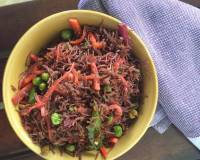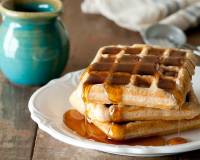If you like to stay abreast with food trends and developments in clean eating, you’ll know that millets are suddenly getting a lot of good press. You might wonder why this food group that has been present in India for nearly 10,000 years is suddenly being touted as excellent for human consumption. You’ve probably dismissed this as the latest food-fad. But think again, here are five facts and very good reasons that make a good case for adding more millets in your meals.
Seed, not grain
Millets are in fact seeds, and not grains. Despite that, it has a lot of carb-like properties – providing high amounts of energy and nutrition, without the calories and sugar. Millets are in fact called a “smart carb” because of the high fibre content and low sugar levels. Additionally, a low glycemic index means they produce lower blood sugar levels and release sugar very slowly, also diminishing glucose absorption by the body. This is one of the major reasons why it is good to replace some of the wheat and/or rice in your daily diet with millets.
Gluten-free
With gluten-intolerance rapidly rising, millets have gained even more importance. It is probably amongst the earliest gluten-free produce, grown and consumed as a staple by Indians long before processed wheat and rice arrived. Available in a variety of colours and types, that allow it to be cooked in many ways, it can easily replace the main gluten-rich carb in your diet.
Good For Gut Health
Millets are alkaline and this helps digest them more easily than wheat or rice. Secondly, millets do not feed pathogenic yeast that are known to thrive on undigested sugars from food and sometimes take over the entire digestive tract. It in fact acts as a feed for the microflora in your gut ecosystem allowing them to thrive and maintain the balance in your digestive tract. All of this ensures that your colon is well-hydrated and your bowel movements are regular.
Vegetarian Protein
It is known that the protein composition of millets is similar to that of unprocessed wheat, however it has been discovered that millets actually have a higher composition of essential amino acids. This makes it rich in the building blocks or proteins that are required for growth and regeneration. However, it has been noted that method of preparation is crucial – roasting millets is known to retain proteins the most.
High Nutritional Value
Arguably the most important reason to include millets in your daily consumption is its high nutritional value. Millets are sweet and nutty to taste and besides being easily digestible and one of the most versatile non-allergenic grains available, they’re loaded with nutrients. High amounts of magnesium helps reduce the painful effects of migraines and in some cases, prevent heart attack. It is packed with Niacin (vitamin B3) which plays an important role in reduction of cholesterol.
Phosphorus aids fat metabolism, body tissue repair and creating energy (phosphorus is an essential component of adenosine triphosphate or ATP, a precursor to energy in your body). A low glycemic index means it can also help lower risk of type 2 diabetes. And high fibre has been shown to protect against some forms of cancer. Apart from satisfying hunger, and providing energy to the body, millets also affect your mind. Studies have shown that it stimulates serotonin release, which plays a role in calming the mind and soothing moods.
Thankfully, India is one of the chief producers of a range of millets like Jowar (Sorghum), Pearl Millet (Bajra), Buckwheat (Kutu), Finger Millet (Ragi) apart from Oats and Rye.
Here is a quick guide, to various Types of Millets and local names in different regions.
1. Barnyard Millet
Rich in Iron and Folic Acid and high on Fiber, Barnyard Millet is great for making Upmas, Pongals and Khichdis.
Tamil Name: Kuthiraivali
Telugu Name: Odalu/ Kodisama
Kannada Name: Oodhalu
Malyalam Name: Kavadapullu
Hindi Name: Sanwa/Jhangora
2. Foxtail Millet
Foxtail Millet is a great source of Vitamins and Minerals. They are smart carbohydrates, the kind which doesn’t increase the blood sugar levels immediately.
Tamil Name: Thinai
Telugu Name: Kirra
Kannada Name: Navane
Malyalam Name: Thinna
Hindi Name: Kangni
3. Finger Millet
A staple in the Southern State of India-Karnataka, most commonly used to make Raggi Mudde, Ragi Dosa, Ragi Idli, Ragi Rotti.
The most notable nutritional feature is that it is a rich source of calcium
Tamil Name: Kelvaragu
Telugu Name: Ragulu
Kannada Name: Ragi
Malyalam Name: Koovarugu
Hindi Name: Mundua/Naachni
4. Little Millet
Although the name suggests ‘Little’ this Millet’s nutritive value is nowhere close to little, instead it's packed with B-vitamins, minerals like calcium, iron, zinc, potassium amongst many other.
Tamil Name: Samai
Telugu Name: Sama
Kannada Name: Samai
Malyalam Name: Chama
Hindi Name: Kutki
5. Pearl Millet
Pearl Millet is considered to be a miracle millet with iron content 8 times higher than that present in rice.
Tamil Name: Kambu
Telugu Name: Sajjalu
Kannada Name: Sajje
Malyalam Name: Kambam
Hindi Name: Bajra
6. Proso Millet
A great substitute for rice in a risotto or a traditional Bisi Bele Bath, you could also cook this millet along with your rice as a great health option with sambar or rasam.
Tamil Name: Panivaragu
Telugu Name: Varigulu
Kannada Name: Baragu
Malyalam Name: Panivaragu
Hindi Name: Barri/Chena
7. Kodo Millet
Kodo Millet is a popular fast or upvas/vrat/fasting food in some parts of India. The millet is definitely superior to rice, gluten free and rich in fibre, vitamins and minerals.
Tamil Name: Varagu
Telugu Name: Arikelu
Kannada Name: Arka
Malyalam Name: Koovaragu
Hindi Name: Kodra
8. Sorghum Millets
This Millet when added to your diet boosts your energy levels and aids in better digestion due to its high fiber content.
Tamil Name: cholam
Telugu Name: jonnalu
Kannada Name: Jola
Malayalam Name: muthahari/kora/panjipullu
Hindi Name: Jwaarie/Jowar
Now that we have understood the various varieties of Millets, It's now time to start incorporating them in our everyday diet.
It is already widely used in our diet, though forgotten and undergoing a much-needed revival of sorts. But that’s not all, many contemporary recipes also make an innovative used of millets, making it easy for you to bring it back into your kitchen and diet.


















